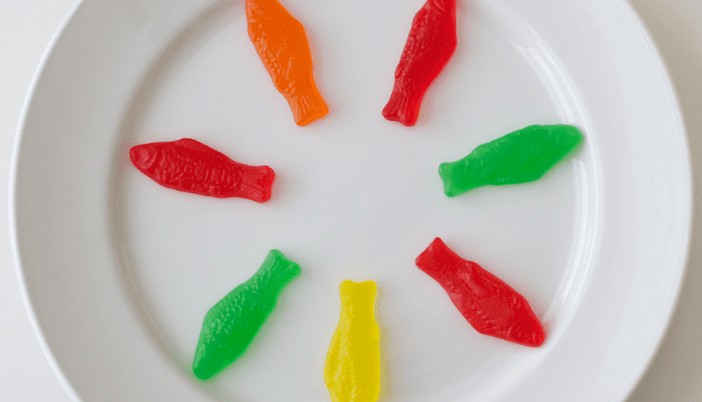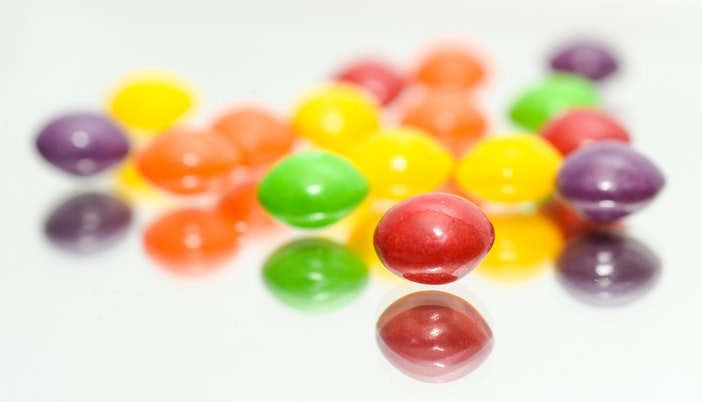Is Tempura Vegan?
Nowadays, there are many restaurants that cater specifically to vegetarians, and the majority of vegans are well-versed in identifying which foods are allowed to have on their menus.
However, even seasoned vegans face challenges in determining which items are off-limits, and specifically, this is the case when attempting to eat dishes from various countries.
When it comes to eating in Japan, vegetables and seafood rule the roost, but it can be difficult to tell which vegetable dishes use animal products as part of its ingredients, such as tempura.
As an Amazon Associate, I earn from qualifying purchases. The links below may be affiliate links. Please read my disclosure policy for more information.
What about tempura?
According to traditional Japanese cuisine, the answer is more often than not ‘yes.’ Non-vegan tempura dishes are more frequent among Western versions of tempura than in traditional Japanese cuisine.
If you’re vegan, you don’t have to change any classic recipes to enjoy vegetable tempura or cook it yourself at home. However, tempura batter may contain animal ingredients.
As a result, it is not safe to assume that all tempura is vegan-friendly simply because of this.
In this article, we’ll explain what tempura is, how tempura batter is created, and the main problems for vegans when it comes to preparing tempura.
In addition to showing how to make vegan tempura batter at home, this article will also discuss some of the strategies to prevent eating non-vegan tempura.
What is Tempura and is it Vegan? A bit of History on Tempura
In the 16th century, the Portuguese introduced tempura to the trade port of Nagasaki. A season of abstention from meat, tempora, was taught to the people by the Dutch, who sold guns and preached Christianity.
The Portuguese word for seasoning, tempero, is another one they might use. Tempura was adopted by the Japanese, who renamed their meal after the word.
Because of the high cost of vegetable oil, tempura was considered a delicacy. Tempura, sushi, and soba only became widely available to the general public in Japan during the Edo period.
Since many of the wooden buildings were located in densely crowded areas, it was offered as a snack dish at restaurants.
A strong Japanese practice of presenting food fresh and in its natural state was adopted by the local cooks of the 18th century in the region.
For the first time, they began frying vegetables and fish while paying attention to every detail, such as the thickness and size of the slices they used to prevent either over- or undercooking.
Seafood and vegetables are two of the most common choices for tempura, which is a classic Japanese cuisine. Vegetable tempura, on the other hand, is more often than not vegan-friendly if it is prepared in the conventional manner, employing the key ingredients.
Peppers, Mushrooms, broccoli, potatoes, and onions, are just a few of the common tempura-coated veggies.
Tempura batter is exceptionally light in both color and texture, making it distinct from other types of batter. In order to achieve this, it is usual practice to use a limited list of ingredients in conjunction with a low gluten flour variation.
When it comes to the most basic tempura batter, weak or soft wheat flour and sparkling or chilled water are all that is needed. A vegan should be able to realize that there is no major reason to reject tempura recipes that use vegetables.
Vegans may enjoy numerous vegetable tempura meals even if the recipes grow a little more complicated. Additionally, spices could be added to the mix to enhance flavor, while baking soda (sodium bicarbonate) may be used as a leavening agent.
Some restaurants utilize a particular tempura flour, and this flour can also be purchased in stores. A leavening agent and low-gluten flour are usually all that is needed to make it vegan-friendly.
So basically, the vast majority of tempura recipes can be made vegan.
Only if you go to a traditional-style Japanese restaurant and order vegetable tempura will you find that some restaurants use egg yolk or whole eggs in their batter mix, which is a little inconvenient. As a result, you should inquire about the inclusion of eggs before placing an order.
It may be possible to have the tempura batter made without eggs, but keep in mind not all establishments are willing to do so.
It’s more likely that you’ll find non-vegan tempura when ordering from a western restaurant, even if that restaurant specializes in tempura style dishes, and it’s very likely in eatries where it is just one option on a big and varied menu.
Eggs and other animal products, such as milk and butter, may be used in some restaurants in western countries, but this is considerably less common.
Moreover, some tempura food items are served with a sauce, which is something to keep in mind. While most sauces are vegan-friendly, it is always a good idea to double-check before using them.
Most times it is usually a dipping sauce, so you need not be concerned about contamination of food. If you are vegan for health reasons, you may prefer to avoid spending money for a non-vegan sauce; nonetheless, it is best to inquire regardless of whether you are vegan for health reasons.
In order to avoid eating Non-Vegan Tempura Variants, what are the Best Practices to Follow?
How to avoid Non-Vegan Tempura
To avoid non-vegan tempura recipes when preparing your own, it’s easy. Many recipes can be made without using any animal products, as I’ll discuss in the following section.
Although some recipes call for eggs, you can still use a vegan egg substitute product to make the dish.
Traditional Japanese-style restaurants that specialize in tempura are more likely to serve vegan meals than those that don’t. Some real restaurants may even include egg yolk or whole egg in their mixtures, so it is still vital to ask.
It is even more critical to check restaurants with western style offerings, that offer tempura as an option on the menu, but do not specialize in it.
Regardless of the type of restaurant you’re at, it’s a good idea to tell a server that you’re a vegan. For example, if your waiter points out that anything you order might be an issue for a vegan diet, the kitchen staff will be able to make adjustments to avoid inadvertent cross-contamination.
Consider whether or not you are okay with having your vegetable tempura fried in the same vat as your seafood or meat tempura.
Depending on your particular preferences, how rigorous you are with your vegan diet, and what sparked your desire to go vegan in the first place, you may or may not need to supplement your diet with animal products.
If you don’t like it, you may have to leave the restaurant if they can’t make this change to the method they prepare vegetable tempura in advance of your visit.
Making Vegan Tempura at Home
It is rather simple to prepare traditional Japanese-style tempura at home, and only a minimal amount of components are necessary. As a matter of fact, you will only only the following ingredients to prepare vegan-friendly vegetable tempura:
- Vegetables (mushrooms, broccoli, peppers, onions, etc.)
- 350g flour
- A pinch of table salt
- 300ml sparkling water (chilled)
- Sunflower oil, or equivalent
Make sure your vegetables are ready to cook when it’s time. To get the most taste out of your vegetables, chop them into pieces that are almost the same size.
Then, in a big pot, heat the oil to around 180°C/350°F, stirring occasionally. When cooking potatoes or other long-cooking veggies, reduce the temperature to around 330°F to avoid accidentally overcooking them. create a cake with the batter
While the oil is heated, whisk together the flour, sparkling water, and a bit of salt in a mixing bowl until smooth. This will be used to make the batter mixture.
Some recipes call for the addition of ice; however, I have found that it is best to omit this step because it can affect the levels of liquid in the mixture.
Stir the batter mixture until the majority of the lumps have been removed. Small amounts of lumps are actually preferable since they allow the mix to retain more air, which results in a lighter texture and overall appearance of the product.
Mix in the vegetables until they are evenly coated with the batter mixture. Then, using a slotted spoon, carefully add the vegetables to the oil and deep fry for a few minutes until they are crisp and golden.
During the cooking process, it is necessary to turn the veggies at least once. When the batter has gone a pale golden color, remove the veggies from the batter and drain any excess oil from the batter before serving.
Are Pre-Made Tempura Mixes Vegan?
Pre-made tempura batter mixtures are available in Asian cuisine stores and even some supermarkets when making tempura at home. Despite the fact that these products will make the process substantially easier, you will need to be careful because some of these products are not vegan-friendly.
The ingredients list should be checked for any mention of animal products. Egg powder and milk powder are the most common sources of contamination, but you should also check for the presence of butter.
Food additives can pose a risk in a tiny percentage of cases. Food preservation, texture, and color can all benefit from the addition of these ingredients to a recipe.
Certain thickeners, raising agents, and E numbers will necessitate specific attention. You should also read the product’s allergy information carefully, as even if an animal product is not a primary ingredient, it may still include traces of it.
Products that have been certified as vegan by a trustworthy body, such as The Vegan Society, should be your first choice whenever possible.
Contacting the brand directly may be the best option if you are still unsure if a product is safe for vegans. If you call the customer service phone number on the packaging of some products, most brands will be pleased to tell you if their product is safe for you to use or not.
As a last resort, you may be able to reach them via their website’s contact page or social media.
Summary
Is it Vegan or Vegetarian?
Answer: No. Traditional tempura is not vegan, as you might expect. Eggs are added to the batter and used to coat the vegetables or shellfish in the recipe.
It’s possible to make tempura vegan if it’s made from vegetables and the batter doesn’t include eggs. Vegetable tempura can be eaten by lacto-ovo vegetarians if the batter contains eggs and/or milk.
Pescatarians, a subset of Vegetarians who consume fish and seafood as their primary source of animal protein, can eat seafood tempura.
Finally, vegans and vegetarians are out of luck when it comes to chicken tempura. As an exception, proletarians would fall under the category of flexitarians or semi-vegetarians.
You should presume that tempura is not vegan unless you’ve had a chance to check the ingredients on food panels in a grocery store or on a restaurant’s website, because tempura can include animal products.





